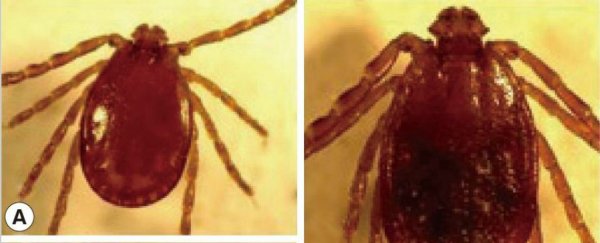New Jersey residents know they need to look out for ticks. The state has one of the highest concentrations of Lyme disease in the country.
But one recent finding could lead Garden State residents to keep an even closer eye out for the bloodsuckers than normal.
Somehow, an east Asian tick that has the ability to essentially clone itself and is a noted invasive species in other parts of the world made its way to Hunterdon County.
And it wasn't just an isolated tick. There were more than 1,000 found in the western area of New Jersey.
The story began in August 2017, when a resident showed up at the Hunterdon County Health Department with samples of the ticks that had started crawling on her arm while she'd been shearing a sheep.
Health department officials noticed that the resident's clothes were covered with the creatures, all tiny larval specimens.
"I get this call from my assistant and he said, 'We've got a resident here who showed up covered in ticks; she's panicking; now we're panicking and her pants are in our freezer,'" Tadhgh Rainey, the head of the health department and lead author on a report documenting the incident, told NPR.
"Intense infestations"
The researchers were able to tell that the ticks belonged to the Haemaphysalis genus, but the specimens didn't match any known Western Hemisphere species.
 The sheep's ear. (Rainey et al, Journal of Medical Entomology, 2018)
The sheep's ear. (Rainey et al, Journal of Medical Entomology, 2018)
After further analysis, they identified the culprit: Haemaphysalis longicornis, a tick native to East Asia.
The species can be parthenogenetic, meaning the ticks can reproduce asexually, essentially cloning themselves (this study provides more details on the unique reproductive processes of these particular ticks).
Other regions of the world have had serious problems with this tick, which is capable of "intense infestations," according to the study. Sometimes the insects have even killed animals by draining them of blood, a phenomenon known as exsanguination.
Isolated individual ticks of this species have been captured at border quarantine stations in the past, but this is the first known full-blown infestation in the US.
The infested "patient" in New Jersey was a 12-year-old Icelandic sheep.
Several department officials headed over to assess the animal, and as soon as they entered the paddock, ticks started to cover their pants.
The sheep itself had hundreds, in all three life stages – larva, nymph, and adult. The bugs covered its ears and face and had burrowed through its thick coat.
In one sample batch, the researchers only found one male, making it likely that this collection was a self-cloning one. The paddock was filled with larvae.
Several permethrin washes later, the sheep was found to be parasite free. After several visits, the paddock was eventually found to be tick-free on November 15 and 16.
But the temperature had already dropped below freezing by then, and no one knows whether that killed the ticks or whether they just retreated into the soil, awaiting spring.
Questions and concerns
The big mystery is how the ticks got there. The sheep itself "had no history of travel outside the country," the report authors noted. It hadn't even travelled locally for a few years, and no other domestic animals live on the property.
There are, however, signs that deer and rabbits pass through the area. These ticks are known to infect similar animals, a fact that unfortunately opens the possibility that the pests could be lingering on other nearby creatures -and could start to spread.
"Ultimately there is great concern about the potential for an H. longicornis infestation in NJ, and this is being actively investigated, although the issue will likely not be settled before the spring of 2018, when any surviving ticks would exit diapause and begin host seeking," the report's authors wrote.
If these ticks are capable of surviving a Mid-Atlantic winter, that would be an unfortunate scenario.
Not only are the pests capable of appearing in such numbers that they can literally drain animals of their blood, they can also bite people and carry disease.
In rural China, a bite from one of these ticks can spread an emerging hemorrhagic fever that can be deadly.
These ticks are also known to carry diseases like Anaplasma, Ehrlichia, Borrelia, and a form of spotted fever, according to the study. Some researchers have suggested that the tick can transmit Lyme disease, too.
So while we don't know for sure that they'd spread local diseases here, they appear (like many other ticks) to be capable of carrying a host of different pathogens.
And as we've seen with the spread of ticks that carry Lyme disease, red meat allergy, and other illnesses, we have a hard time getting rid of ticks.
"[W]e advocate continued vigilance because even if this species is not already established in the United States, suitable hosts and habitats are common and widespread here," the report's authors wrote.
This article was originally published by Business Insider.
More from Business Insider:
